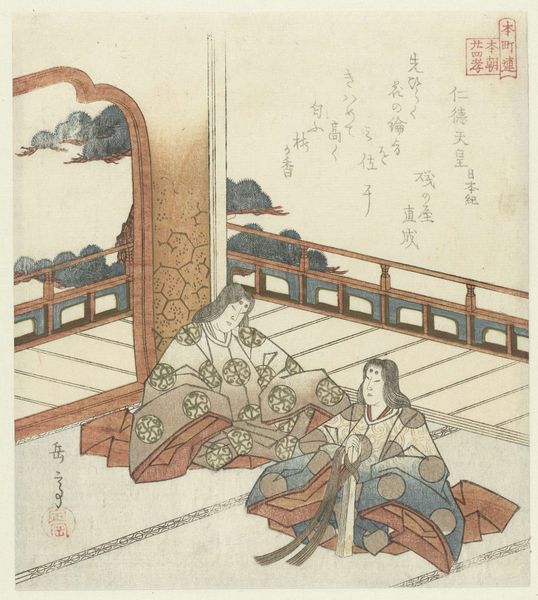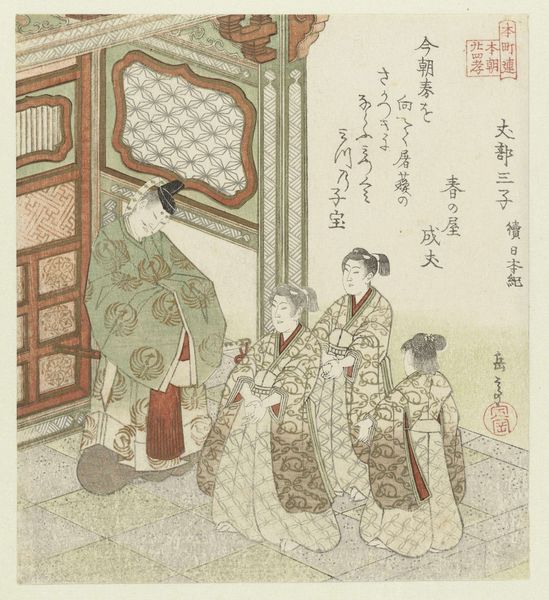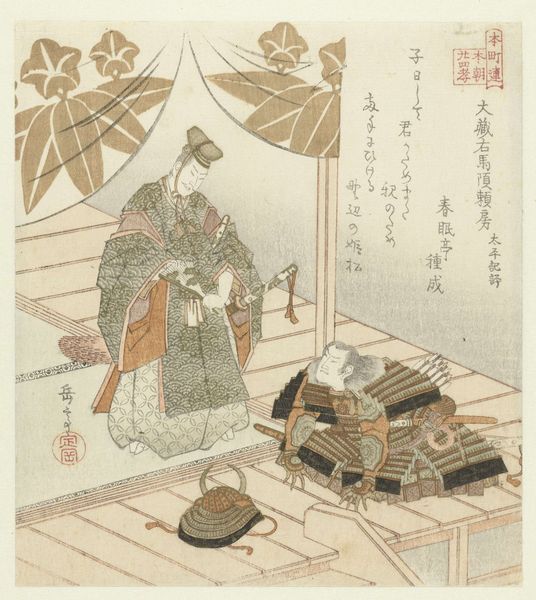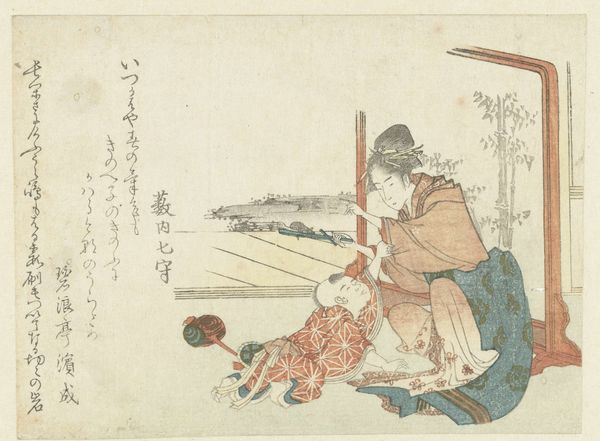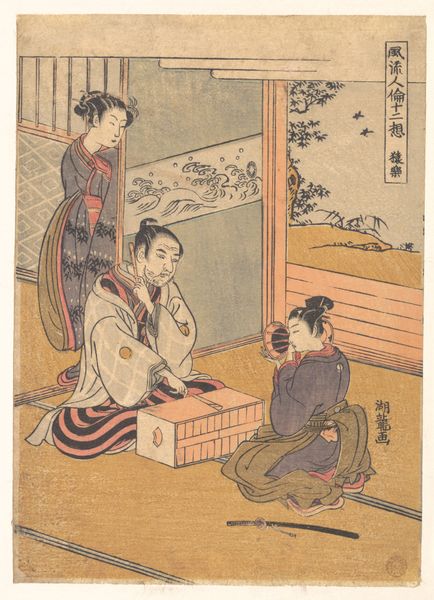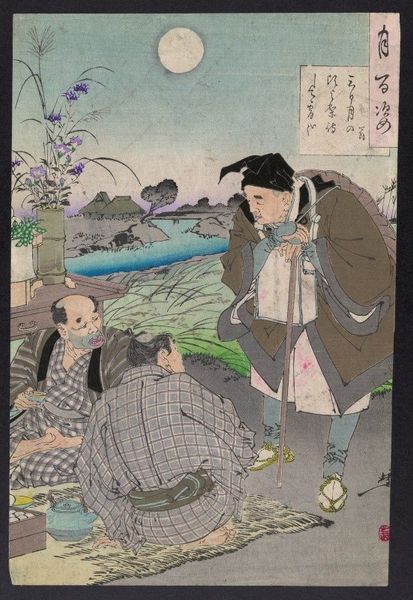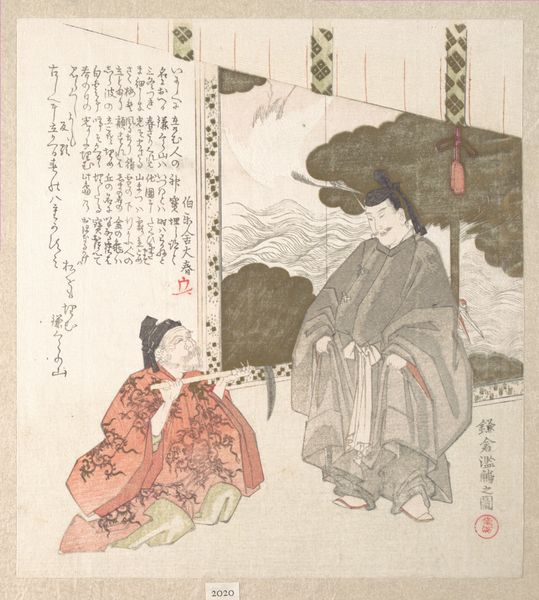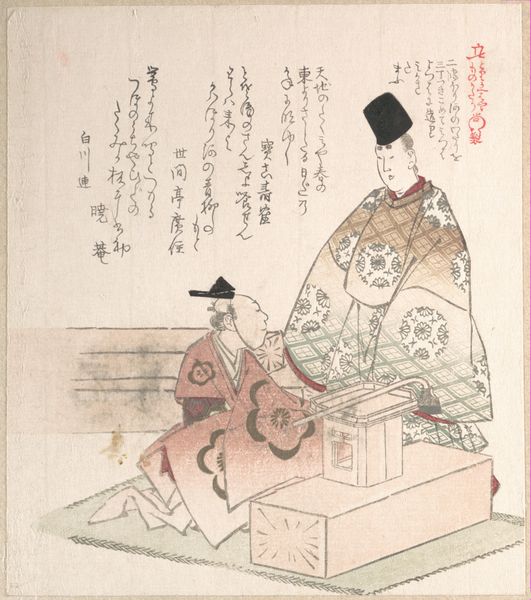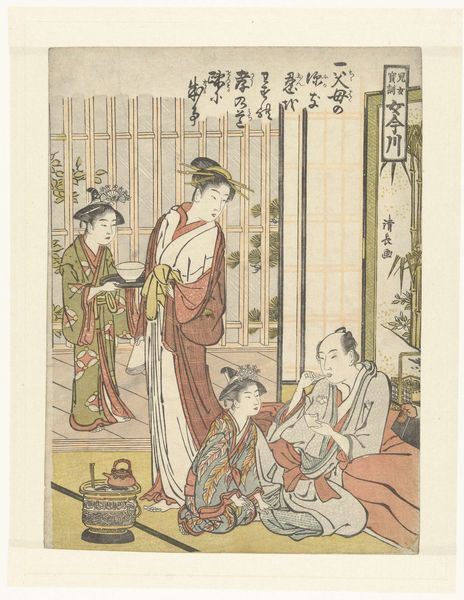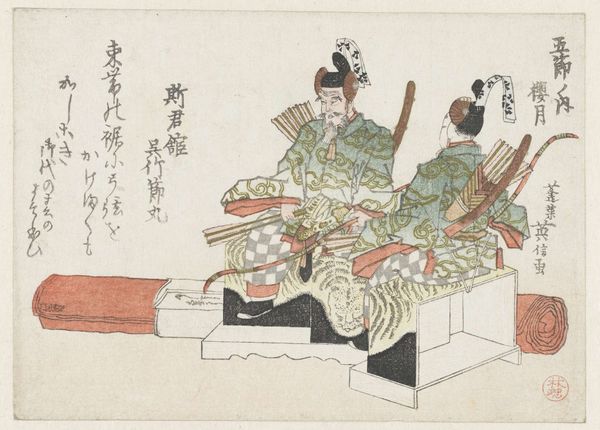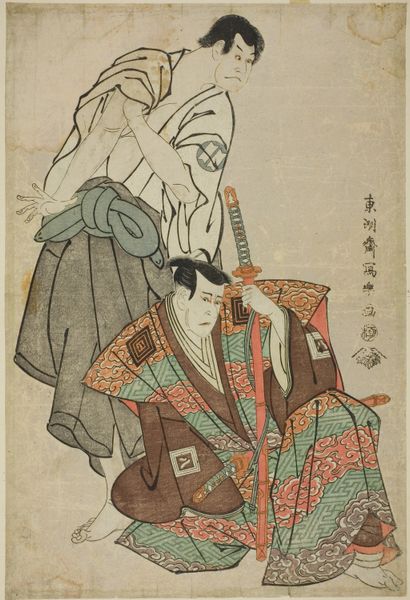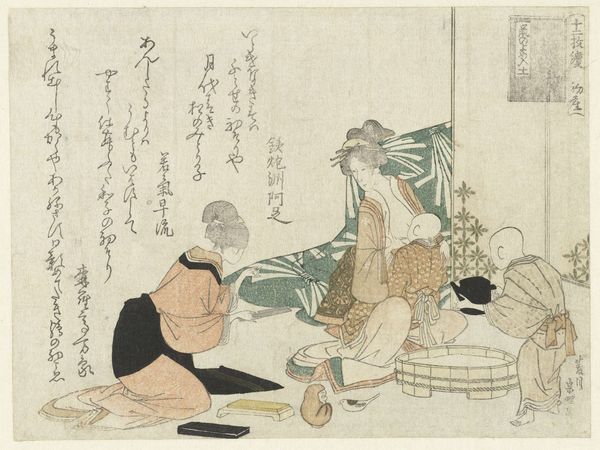
Twenty-four Japanese examples of filial piety for the Honchôren c. 1821
0:00
0:00
print, woodblock-print
#
portrait
# print
#
asian-art
#
ukiyo-e
#
woodblock-print
#
history-painting
Dimensions: height 203 mm, width 199 mm
Copyright: Rijks Museum: Open Domain
Yashima Gakutei created this woodblock print titled "Twenty-four Japanese examples of filial piety for the Honchôren," sometime between 1786 and 1868. It's a snapshot into the socio-cultural values of the Edo period. Filial piety, a cornerstone of Confucian ethics, dictated profound respect and obedience towards one's parents and elders, shaping family structures and societal norms. But who decided what stories were told? Who was left out of the narrative? In this print, two figures are looking down at a woman on the floor. What does it mean to see a woman depicted enacting filial piety? Is she fulfilling her duty or is she being submissive to the prevailing patriarchal structure? Gakutei invites us to reflect on the emotional and personal dimensions of duty and obligation within the family, which still resonate today.
Comments
No comments
Be the first to comment and join the conversation on the ultimate creative platform.
